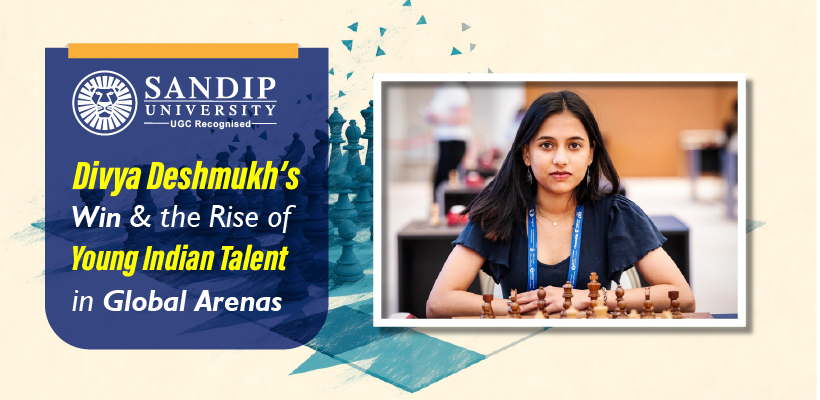It is a matter of great national pride that Divya Deshmukh has become the first Indian champion of the FIDE Women’s Chess World Cup 2025 at the age of nineteen. Furthermore, she has also secured the title “Grandmaster” after this win. The interesting bit here is that her opponent in the qualifying match was Ms. Koneru Humpy, an Indian player as well. This goes to show India’s dominance in the chess arena at the global stage.
Just last year, Gukesh Dommaraju won the FIDE World Championship, becoming the youngest world chess champion in history at the age of seventeen. He is also the second Indian to hold this title, the first being Viswanathan Anand. This goes to show that Indian excellence is at the rise and young emerging Indian talent and their global sports achievements are going to only increase in coming years.
India is acclaimed as the land where chess was invented, so it is only fitting that India dominates the world chess arena across categories. India has a rich history and culture of indoor and outdoor sports, which deserves to be revived and celebrated for young talent to flourish. It is important to note that there must be a massive support system in place to ensure that young Indian talent realises its potential at the budding stage.
A number of factors come into play here. When young Indian sports talent makes headlines, we often cannot see the mechanisms at play in the background that led to their success. It is not one or two factors, but a well-oiled machine, right from parents, to schools, to mentors, and a sell-driving urge to succeed that makes champions. Educational institutions have a monumental role in identifying and nurturing young sports talent.
Role of Educational Institutions in Nurturing Sports Success Stories in India
- Identifying and Nurturing Talent
Educational institutions have dedicated sports facilities in schools and later in universities to help students explore sports. These facilities form the foundation for identification of talented sportspersons who can be trained to achieve great success at the global stage. Top private universities in Maharashtra offer amazing sports scholarships to motivate budding Indian athletes.
- Building a Global Mindset
Students need to be trained to create a global mindset and set high standards of success. They must be trained through globally-set standards in sports to be able to compete at the international level. Scientific methods for training should be implemented to prepare students for tough competition globally.
- Investing in Infrastructure and Resources
While the government is heavily investing in sports infrastructure and resources to encourage young talented Indians. Schools and universities are developing international-grade sports facilities to accommodate young athletes. There is a growing public-private partnership that is leading to building and maintenance of world class sports facilities for young sports talent.
- Global Collaborations and Exposure
Educational institutions collaborate with global sports clubs and organisations to provide the right atmosphere that nurtures athletes. Ample research is undertaken at the global level to drive innovation in training modules and facilities. Additionally, Indian educational institutions partner with international institutions to conduct international sports competitions to provide students with global sports exposure.
- Encouraging a Winning Culture
The right mindset can lead to victory. Building a winning culture has to start from the primary stage for young athletes to put them into the winning mindset. Encouraging competition in sports at the school and at the university level broadens the scope for finding outstanding talent from the talent pool. Talent scouting, financial incentives, training support, and scholarships can really build a winning culture in sports.
Conclusion
The future of Indian sports is bright as the Government of India is investing heavily in creating future champions. Government initiatives like “Khelo India” go a long way in reviving India’s rich sports culture at the grass-root level. However, the initiative to invest in sports needs to come from the people as well. The government can only provide incentives and facilities. It is used to identify talent, support its growth, and help them shine at the global level.

